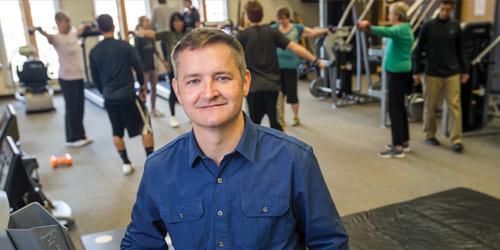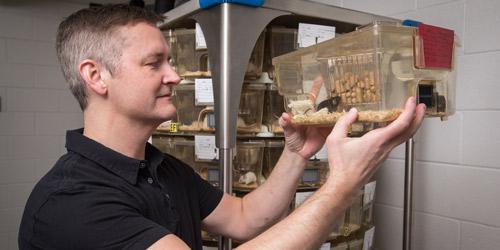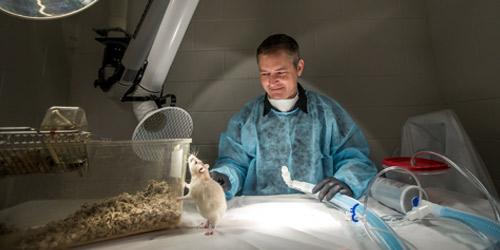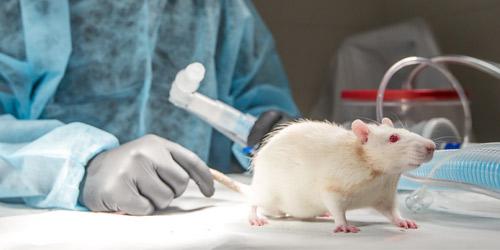Found in Translation
Groundbreaking UNC research melds scientific lab work with real-world clinic to reveal benefits of exercise for cancer patients
Sitting in a small, instrument-packed lab in Ross Hall is a squat, benign-looking gray tank that contains liquid nitrogen. It also contains a spectrum of cancer cells from various lines. But this is one instance where cancer cells are helping make cancer patients’ lives better. These cells are used in animal research that helps doctors understand exercise’s effect on cancer patients during and after chemotherapy treatment.
Across campus, at the UNC Cancer Rehabilitation Institute, that research is applied to real life, where cancer patients and survivors do cardio and resistance workouts to combat the effects of chemotherapy and cancer on their quality of life.
“This is translational research,” says Reid Hayward, Ph.D., director of the institute. “We use what we learn in the lab and apply it to real life, and take what we see in real life and try to replicate and address it in the lab.”
UNC’s groundbreaking work in cancer rehabilitation has led Hayward to Washington D.C., where he’s spoken to doctors at the National Institutes of Health, and to Memphis, where he’s twice given presentations to the teams at St. Jude Children’s Research Hospital.
Hayward, who came to UNC in 1998 at the invitation of the institute’s founding director, the late Carole Schneider, shares an intense energy for the institute’s work with patients, researchers and students. It leads him to spend hours in the animal lab (in spite of allergies to rats) and sparks him to ask — and answer — questions about exercise and cancer.
An estimated 75 to 95 percent of cancer patients endure severe treatment side effects. Hayward explains that one side effect of a common chemo drug is cardiotoxicity, or heart failure. It can force patients to choose to either treat for cancer and deal with heart failure, or have a healthy heart but succumb to cancer. Taking that challenge to the lab, Hayward and his colleagues have shown that exercise during and after treatment is cardioprotective.
While presenting this information to doctors at St. Jude’s, Hayward was asked about the impact of exercise on children fighting cancer. Returning to Colorado, Hayward headed to his lab, following rats from weaning through maturity to answer St. Jude’s questions. He found that exercise significantly decreased risks of heart failure as young rats matured.
Hayward and his colleagues have also studied the effects of exercise on patients with “chemo brain,” a side effect of treatment that impairs memory and cognitive function. They’ve looked at fatigue experienced by patients in order to understand and determine optimal exercise intensity.
Hayward explains that what’s unique about UNC’s work with patients, students and research is that all three intersect in hands-on understanding. It’s not a matter of giving a patient a list of exercises to do on their own at home. Instead, it’s an exchange of custom adjustments, encouragement, understanding and inspiration that makes the program so effective.
“The relationship between patients and students is palpable,” Hayward says. “Imagine a 20-year-old invincible college student looking at a person who is facing death and is inspired by them, while the patient is inspired, witnessing a young person putting their education into practice. I love being part of that.”
That personal touch and customized, research-based approach is something Hayward hopes to see expand beyond UNC’s geographical boundaries. To extend the institute’s benefits, Hayward is developing a certification program through both on-campus workshops and global outreach.
“We have people come from Asia for workshops, and we’re about to launch the certification program in the UK,” he says. “We’re having an impact on not just cancer survivors in our community, but all over the world.”
With the introduction of certification, Hayward is taking what rises from that small lab in Ross Hall to research that benefits cancer patients and survivors on a global scale. It’s translational research in the truest sense.
–Debbie Pitner Moors





